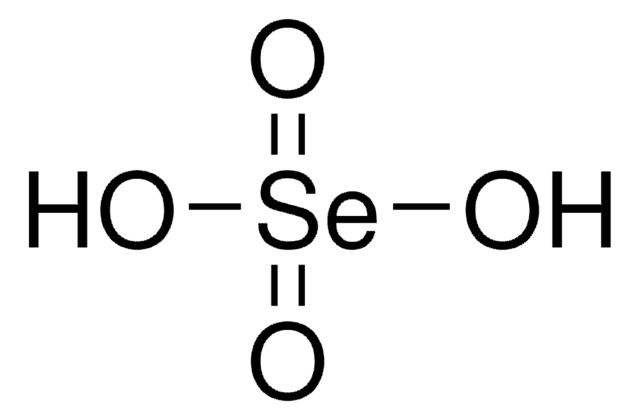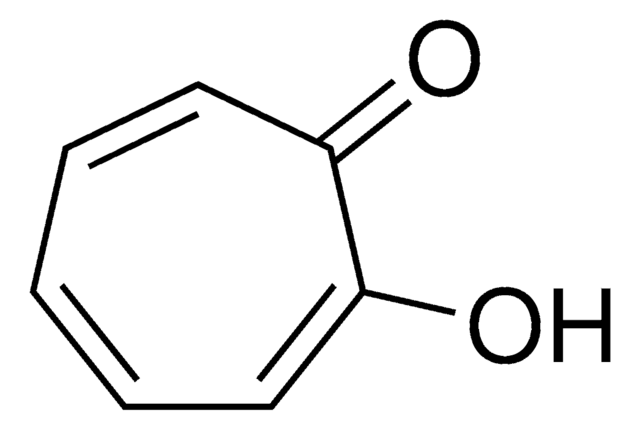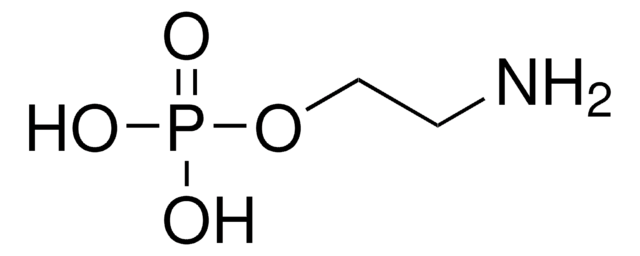229857
Selenous acid
99.999% trace metals basis
Synonym(s):
Selenious acid
About This Item
Recommended Products
Assay
99.999% trace metals basis
form
solid
mp
70 °C (dec.) (lit.)
density
3.004 g/mL at 25 °C (lit.)
SMILES string
O[Se](O)=O
InChI
1S/H2O3Se/c1-4(2)3/h(H2,1,2,3)
InChI key
MCAHWIHFGHIESP-UHFFFAOYSA-N
Looking for similar products? Visit Product Comparison Guide
Related Categories
General description
Application
- Selenic acid etching assisted vacancy engineering for designing highly active electrocatalysts toward the oxygen evolution reaction: Examination of the use of selenous acid in vacancy engineering for electrocatalysts (Zhang et al., 2021).
- Europium (III) Catalysis for Reduction of Thionine Dye by Selenous Acid in Aqueous Sulfuric Acid Solutions: Study on the kinetics and mechanism of selenium(IV) reduction in aqueous sulfuric acid solutions (Fawzy, 2016).
Packaging
Signal Word
Danger
Hazard Statements
Precautionary Statements
Hazard Classifications
Acute Tox. 3 Inhalation - Acute Tox. 3 Oral - Aquatic Acute 1 - Aquatic Chronic 1 - STOT RE 2
Storage Class Code
6.1D - Non-combustible acute toxic Cat.3 / toxic hazardous materials or hazardous materials causing chronic effects
WGK
WGK 3
Flash Point(F)
Not applicable
Flash Point(C)
Not applicable
Personal Protective Equipment
Regulatory Listings
Regulatory Listings are mainly provided for chemical products. Only limited information can be provided here for non-chemical products. No entry means none of the components are listed. It is the user’s obligation to ensure the safe and legal use of the product.
PDSCL
Poisonous substance
PRTR
Class I Designated Chemical Substances
ISHL Indicated Name
Substances Subject to be Indicated Names
ISHL Notified Names
Substances Subject to be Notified Names
JAN Code
229857-50G:4548173120515
229857-VAR:
229857-BULK:
229857-500G:4548173120508
Certificates of Analysis (COA)
Search for Certificates of Analysis (COA) by entering the products Lot/Batch Number. Lot and Batch Numbers can be found on a product’s label following the words ‘Lot’ or ‘Batch’.
Already Own This Product?
Find documentation for the products that you have recently purchased in the Document Library.
Customers Also Viewed
Our team of scientists has experience in all areas of research including Life Science, Material Science, Chemical Synthesis, Chromatography, Analytical and many others.
Contact Technical Service















